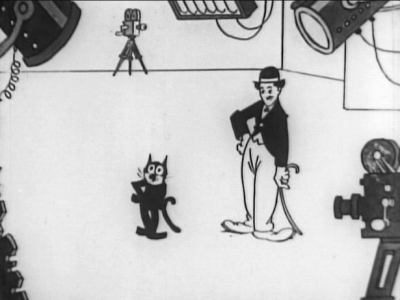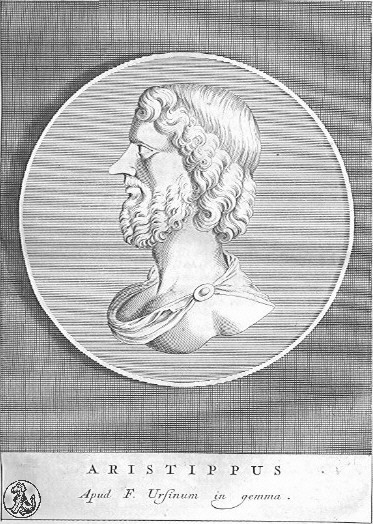|
Fritz The Cat
''Fritz the Cat'' is a comic strip created by Robert Crumb. Set in a "supercity" of anthropomorphic animals, it focused on Fritz, a feline con artist who frequently went on wild adventures that sometimes involved sexual escapades. Crumb began drawing the character in homemade comic books as a child. Fritz became one of his best-known characters, thanks largely to the motion picture adaptation by Ralph Bakshi. The strip first appeared in '' Help!'' and ''Cavalier'' magazines, and subsequently in publications associated with the underground comix scene between 1965 and 1972; ''Fritz the Cat'' comic compilations elevated it to one of the underground scene's most iconic features. The strip received further attention when it was adapted into a 1972 animated film of the same name. The directorial debut of animator Bakshi, it was an international hit. It was the first animated feature film to receive an X rating in the United States and the most successful independent animated feat ... [...More Info...] [...Related Items...] OR: [Wikipedia] [Google] [Baidu] |
Fritz The Cat (film)
''Fritz the Cat'' is a 1972 American independent adult animated black comedy film written and directed by Ralph Bakshi in his feature film debut. Based on the comic strip by R. Crumb and starring Skip Hinnant, the film focuses on Fritz (Hinnant), a glib, womanizing and fraudulent cat in an anthropomorphic animal version of New York City during the mid-to-late 1960s. Fritz decides on a whim to drop out of college, interacts with inner city African American crows, unintentionally starts a race riot, and becomes a leftist revolutionary. The film is a satire focusing on American college life of the era, race relations, and the free love movement, and serves as a criticism of the countercultural political revolution and dishonest political activists. The film had a troubled production history, as Crumb, who is a leftist, had disagreements with the filmmakers over the film's political content, which he saw as being critical of the political left. Produced on a budget of $700, ... [...More Info...] [...Related Items...] OR: [Wikipedia] [Google] [Baidu] |
Fritz Description
Fritz originated as a German nickname for Friedrich, or Frederick (''Der Alte Fritz'', and ''Stary Fryc'' were common nicknames for King Frederick II of Prussia and Frederick III, German Emperor) as well as for similar names including Fridolin and, less commonly, Francis. Fritz (Fryc) was also a name given to German troops by the Entente powers equivalent to the derogative Tommy. Other common bases for which the name Fritz was used include the surnames Fritsche, Fritzsche, Fritsch, Frisch(e) and Frycz. Below is a list of notable people with the name "Fritz." Surname *Amanda Fritz (born 1958), retired registered psychiatric nurse and politician from Oregon *Al Fritz (1924–2013), American businessman * Ben Fritz (born 1981), American baseball coach *Betty Jane Fritz (1924–1994), one of the original players in the All-American Girls Professional Baseball League *Clemens Fritz (born 1980), German footballer *Edmund Fritz (before 1918–after 1932), Austrian actor, film director ... [...More Info...] [...Related Items...] OR: [Wikipedia] [Google] [Baidu] |
Candide
( , ) is a French satire written by Voltaire, a philosopher of the Age of Enlightenment, first published in 1759. The novella has been widely translated, with English versions titled ''Candide: or, All for the Best'' (1759); ''Candide: or, The Optimist'' (1762); and ''Candide: Optimism'' (1947). It begins with a young man, Candide, who is living a sheltered life in an Edenic paradise In religion, paradise is a place of exceptional happiness and delight. Paradisiacal notions are often laden with pastoral imagery, and may be cosmogonical or eschatological or both, often compared to the miseries of human civilization: in paradis ... and being indoctrinated with Leibnizian optimism by his mentor, Professor Pangloss. The work describes the abrupt cessation of this lifestyle, followed by Candide's slow and painful disillusionment as he witnesses and experiences great hardships in the world. Voltaire concludes Candide with, if not rejecting Leibnizian optimism outright, advocatin ... [...More Info...] [...Related Items...] OR: [Wikipedia] [Google] [Baidu] |
Charlie Chaplin
Sir Charles Spencer Chaplin Jr. (16 April 188925 December 1977) was an English comic actor, filmmaker, and composer who rose to fame in the era of silent film. He became a worldwide icon through his screen persona, the Tramp, and is considered one of the film industry's most important figures. His career spanned more than 75 years, from childhood in the Victorian era until a year before his death in 1977, and encompassed both adulation and controversy. Chaplin's childhood in London was one of poverty and hardship. His father was absent and his mother struggled financially — he was sent to a workhouse twice before age nine. When he was 14, his mother was committed to a mental asylum. Chaplin began performing at an early age, touring music halls and later working as a stage actor and comedian. At 19, he was signed to the Fred Karno company, which took him to the United States. He was scouted for the film industry and began appearing in 1914 for Keystone Studios. He soon d ... [...More Info...] [...Related Items...] OR: [Wikipedia] [Google] [Baidu] |
Felix The Cat
Felix the Cat is a cartoon character created in 1919 by Pat Sullivan and Otto Messmer during the silent film era. An anthropomorphic black cat with white eyes, a black body, and a giant grin, he was one of the most recognized cartoon characters in film history. Felix was the first animated character to attain a level of popularity sufficient to draw movie audiences. Felix originated from the studio of Australian cartoonist- film entrepreneur Pat Sullivan. Either Sullivan himself or his lead animator, American Otto Messmer, created the character. What is certain is that Felix emerged from Sullivan's studio, and cartoons featuring the character became big in popular culture. Aside from the animated shorts, Felix starred in a comic strip (drawn by Sullivan, Messmer and later Joe Oriolo) beginning in 1923, and his image soon adorned merchandise such as ceramics, toys and postcards. Several manufacturers made stuffed Felix toys. Jazz bands such as Paul Whiteman's played songs ... [...More Info...] [...Related Items...] OR: [Wikipedia] [Google] [Baidu] |
Ethics
Ethics or moral philosophy is a branch of philosophy that "involves systematizing, defending, and recommending concepts of right and wrong behavior".''Internet Encyclopedia of Philosophy'' The field of ethics, along with aesthetics, concerns matters of value; these fields comprise the branch of philosophy called axiology. Ethics seeks to resolve questions of human morality by defining concepts such as good and evil, right and wrong, virtue and vice, justice and crime. As a field of intellectual inquiry, moral philosophy is related to the fields of moral psychology, descriptive ethics, and value theory. Three major areas of study within ethics recognized today are: # Meta-ethics, concerning the theoretical meaning and reference of moral propositions, and how their truth values (if any) can be determined; # Normative ethics, concerning the practical means of determining a moral course of action; # Applied ethics, concerning what a person is obligated (or permitted) ... [...More Info...] [...Related Items...] OR: [Wikipedia] [Google] [Baidu] |
Morality
Morality () is the differentiation of intentions, decisions and actions between those that are distinguished as proper (right) and those that are improper (wrong). Morality can be a body of standards or principles derived from a code of conduct from a particular philosophy, religion or culture, or it can derive from a standard that a person believes should be universal. Morality may also be specifically synonymous with " goodness" or "rightness". Moral philosophy includes meta-ethics, which studies abstract issues such as moral ontology and moral epistemology, and normative ethics, which studies more concrete systems of moral decision-making such as deontological ethics and consequentialism. An example of normative ethical philosophy is the Golden Rule, which states: "One should treat others as one would like others to treat oneself." Immorality is the active opposition to morality (i.e. opposition to that which is good or right), while amorality is variously defined ... [...More Info...] [...Related Items...] OR: [Wikipedia] [Google] [Baidu] |
Hedonism
Hedonism refers to a family of theories, all of which have in common that pleasure plays a central role in them. ''Psychological'' or ''motivational hedonism'' claims that human behavior is determined by desires to increase pleasure and to decrease pain. ''Normative'' or ''ethical hedonism'', on the other hand, is not about how we actually act but how we ought to act: we should pursue pleasure and avoid pain. ''Axiological hedonism'', which is sometimes treated as a part of ethical hedonism, is the thesis that only pleasure has intrinsic value. Applied to well-being or what is good for someone, it is the thesis that pleasure and suffering are the only components of well-being. These technical definitions of hedonism within philosophy, which are usually seen as respectable schools of thought, have to be distinguished from how the term is used in everyday language, sometimes referred to as "folk hedonism". In this sense, it has a negative connotation, linked to the egoistic pursuit ... [...More Info...] [...Related Items...] OR: [Wikipedia] [Google] [Baidu] |
Poseur
A poseur is someone who poses for effect, or behaves affectedly, who affects a particular attitude, character or manner to impress others, or who pretends to belong to a particular group.Definition of poseur at Dictionary.com A poseur may be a person who pretends to be what they are not or an insincere person; they may have a flair for drama or behave as if they are onstage in daily life.Hardy, Thomas. ''The Literary Notebooks of Thomas Hardy, Volume 2''. Lennart A Björk, ed. Springer, 2016. . page 256. "Poseur" or "poseuse" is also used to mean a person who poses for a visual artist—a . Examples [...More Info...] [...Related Items...] OR: [Wikipedia] [Google] [Baidu] |
Zap Comix
''Zap Comix'' is an underground comix series which was originally part of the youth counterculture of the late 1960s. While a few small-circulation self-published satirical comic books had been printed prior to this, ''Zap'' became the model for the " comix" movement that snowballed after its release. The title itself published 17 issues over a period of 46 years. Premiering in early 1968 as a showcase for the work of Robert Crumb, ''Zap'' was unlike any comic book sensibility that had been seen before. After the success of the first issue, Crumb opened the pages of ''Zap'' to several other artists, including S. Clay Wilson, Robert Williams, "Spain" Rodriguez, Gilbert Shelton, and two artists with reputations as psychedelic poster designers, Victor Moscoso and Rick Griffin. This group of artists, along with Crumb, remained mostly constant throughout the history of ''Zap.'' While the origin of the spelling "comix" is a subject of some dispute, it was popularized by its appea ... [...More Info...] [...Related Items...] OR: [Wikipedia] [Google] [Baidu] |
Graphic Novel
A graphic novel is a long-form, fictional work of sequential art. The term ''graphic novel'' is often applied broadly, including fiction, non-fiction, and anthologized work, though this practice is highly contested by comic scholars and industry professionals. It is, at least in the United States, typically distinct from the term ''comic book'', which is generally used for comics periodicals and Trade paperback (comics), trade paperbacks (see American comic book). Comics historian, Fan historian Richard Kyle coined the term ''graphic novel'' in an essay in the November 1964 issue of the comics fanzine ''Capa-Alpha''. The term gained popularity in the comics community after the publication of Will Eisner's ''A Contract with God'' (1978) and the start of the ''Marvel Graphic Novel'' line (comics), line (1982) and became familiar to the public in the late 1980s after the commercial successes of the first volume of Art Spiegelman's ''Maus'' in 1986, the collected editions of Frank Mi ... [...More Info...] [...Related Items...] OR: [Wikipedia] [Google] [Baidu] |








